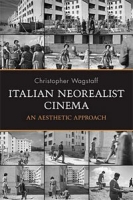| Italian Neorealist Cinema: An Aesthetic Approach артикул 1540d. |
 |
The end of the Second World War saw the emergence in Italy of the neorealism movement, which produced a number of films characterized by stories set among the poor and working class, often shot on location using non-professional actors In this study Christopher Wagstaff provides an in-depth analysis of neorealist film, focusing on three films ожзящ that have had a major impact on filmmakers and audiences around the world: Roberto Rossellini's Roma citta aperta and Paisa and Vittorio De Sica's Ladri di biciclette Indeed, these films are still, more than half a century after they were made, among the most highly regarded works in the history of cinema In this insightful and carefully researched work, Wagstaff suggests that the importance of these films is largely due to the aesthetic and rhetorical qualities of their assembled sounds and images rather than, as commonly thought, their particular representations of historical reality The author begins by situating neorealist cinema in its historical, industrial, commercial, and cultural context He goes on to provide a theoretical discussion of realism and the merits of neorealist films, individually and collectively, as aesthetic artefacts He follows with a detailed analysis of the three films, focusing on technical and production aspects as well as on the significance of the films as cinematic works of art While providing a wealth of information and analysis previously unavailable to an English-speaking audience, Italian Neorealist Cinema offers a radically new perspective on neorealist cinema and the Italian art cinema that followed it. LuxottiИздательство: University of Toronto Press, 2007 г Твердый переплет, 464 стр ISBN 0802097618 Язык: Английский. |